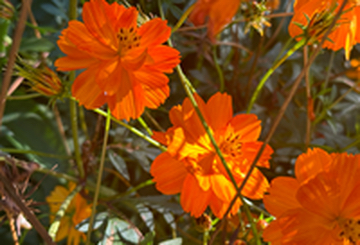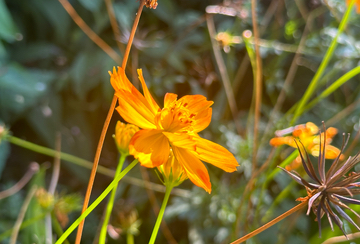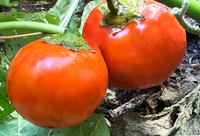
The End of Summer

We had a few unseasonably cool nights, even a frost warning, and although the normal seasonal patterns resumed after that, the vegetation took notice and went into full end of summer alert.
Plants use their internal guidance to determine when the useful season ends, then systematically shut down to prepare for winter.
I didn't want to interfere with their natural instincts because I've learned that they are consistently accurate when it comes to the weather.
Instead, I decided to adopt the fall gardening schedule as well, stop fertilizing and increase the stretch between waterings.
Despite the warm temperatures, it feels like fall, almost a month later than it actually is.
The trademark September blue skies and dry, warm air have made their appearance, and the sun's tired, golden hue is already casting long shadows, as it does around the time of the equinox.
Speaking of gold, the goldenrod is going to have a fantastic year, and I can't wait to see it bloom.

Prairie Flowers

While the pedigreed perennial species struggled with the strange weather, the dwellers of the prairie are having a stellar year.
The classic cottage garden flowers were overshadowed this year by the native flora, whose modern specimens, though stripped of their natural simplicity, retained their resilience through layer after layer of hybridization and improvement.
The coneflowers, goldenrod, black eyed Susans, malvas, sunflowers, lupines, thistles, and coreopsis stole the spotlight, while the hostas and lilies were reluctant to bloom.
All of these plants have adapted to the climate conditions here, and everything, from the soil composition to the latitude, helps them thrive, so they're not going to be rattled by one unconventional season.
Look at this coreopsis, radiating joy as it soaks in the morning sunlight, completely unfazed by August freeze warnings.
